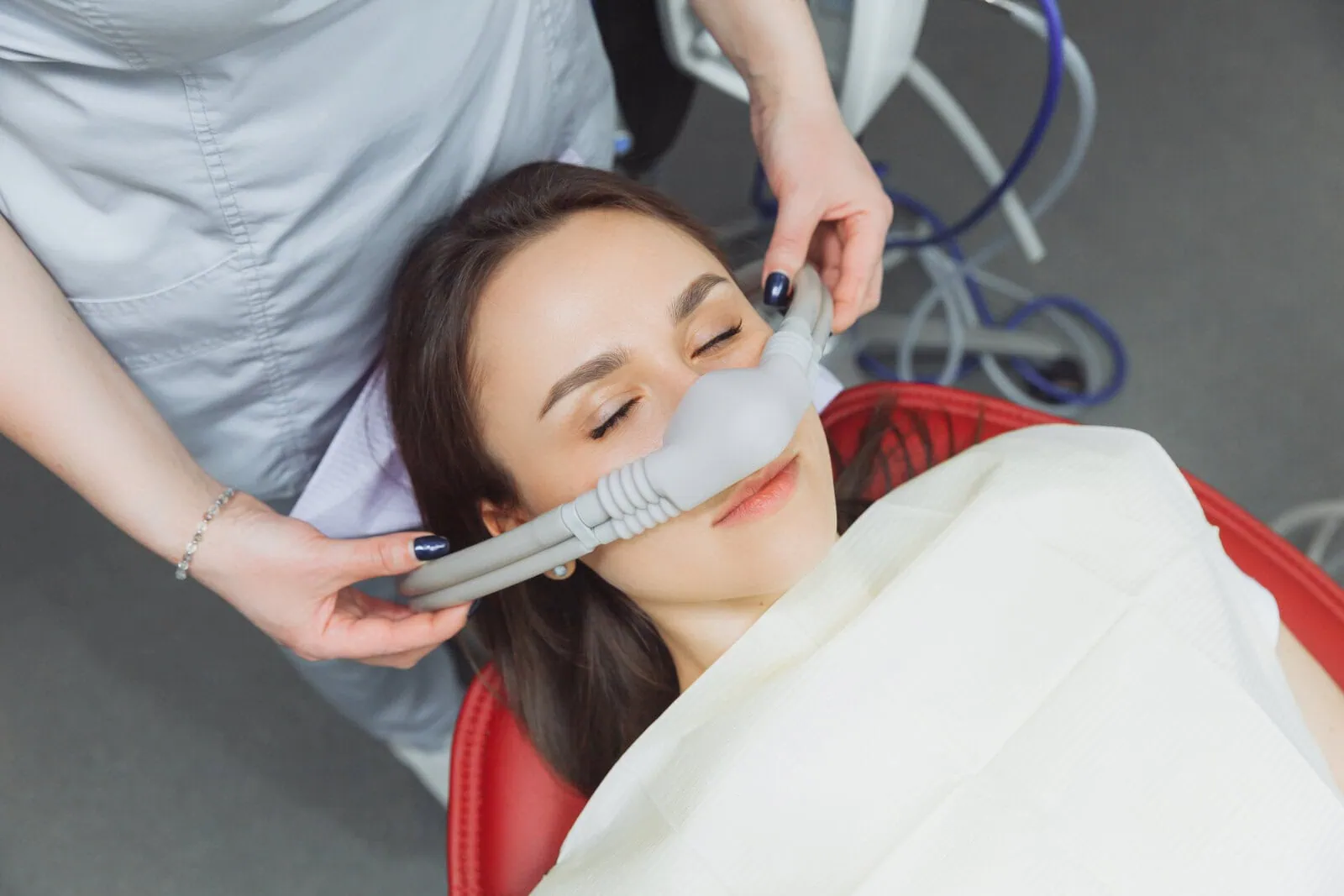General Anesthesia for Oral Surgery at Valley Oral Surgery in Livermore and Dublin, CA
Valley Oral Surgery offers both in-office and hospital-based general anesthesia options to ensure safe, comfortable surgical care.

What Is General Anesthesia?
General anesthesia is a form of deep sedation that renders a patient completely unconscious and unresponsive during a procedure. It is commonly used for more extensive oral surgeries, patients with high anxiety, or individuals with special medical needs.
Unlike minimal or moderate sedation, general anesthesia:
- Induces a controlled loss of consciousness
- Requires airway support and close monitoring
- Is administered by trained professionals in a controlled setting
We offer general anesthesia for oral surgery both in-office and in a hospital or surgical center environment, depending on your health status and procedural needs. To learn more about lighter sedation options, visit our Minimal & Moderate Sedation page.
Office-Based General Anesthesia with Local Anesthetic
For healthy patients undergoing complex or multiple procedures, in-office general anesthesia is often a convenient and safe option. It combines general anesthesia with local anesthetic, which numbs the surgical site after the patient is asleep.
This type of anesthesia is typically used for:
- Wisdom teeth removal
- Multiple tooth extractions
- Full-arch dental implant surgery
- Patients with severe dental anxiety
How it works:
- Arrival: You arrive with a responsible adult who will remain on-site and drive you home.
- Administration: General anesthesia is administered intravenously in a certified surgical operatory.
- Local Anesthetic: Local anesthetic is also used to control post-op discomfort after you wake.
- Monitoring: Vital signs and oxygen levels are continuously monitored throughout.
- Recovery: Patients typically recover in-office for 30–60 minutes before discharge, with full instructions for at-home care and follow-up.
Hospital or Surgery Center-Based General Anesthesia
In some cases, general anesthesia is provided in a hospital or outpatient surgical center, particularly for:
- Patients with complex medical conditions
- Those requiring anesthesia delivered by a medical anesthesiologist
- Individuals with developmental or physical disabilities
- Very young children (in collaboration with pediatric or medical providers)
This option provides:
- Access to a full medical team and additional monitoring equipment
- Cardiac or respiratory monitoring, if needed
- In-depth pre-anesthetic medical clearance
- An extended recovery period in a controlled environment
Your oral surgeon will work closely with hospital anesthesiologists and medical staff to ensure seamless care before, during, and after the procedure.
Is General Anesthesia Safe?
When administered by a qualified team and with proper screening, general anesthesia is a safe and effective method for ensuring patient comfort during oral surgery.
At Valley Oral Surgery:
- Our surgeons are trained in anesthesia delivery and certified in Advanced Cardiac Life Support (ACLS)
- Emergency protocols and monitoring systems are always in place
- We conduct thorough pre-anesthesia health reviews to assess risk and eligibility
- Our in-office settings meet California’s safety requirements for anesthesia use in outpatient surgical care
Choosing the Right Setting for Your Procedure
Whether your procedure is performed in-office or at a hospital, the decision is based on:
- Your medical history and health conditions
- The type and length of surgery
- Your level of anxiety or sedation preference
- Insurance or referral requirements
We will review all available options with you during your consultation and help coordinate with your medical providers if hospital-based care is needed.
Post-Anesthesia Recovery
After receiving general anesthesia, you can expect:
- Grogginess or drowsiness for several hours
- Possible nausea (usually short-lived)
- Restrictions on eating, driving, or making legal decisions for 24 hours
- A full review of post-op instructions before discharge
You’ll need a responsible adult to drive you home and remain with you until the sedation fully wears off.
Who Performs Anesthesia at Valley Oral Surgery?
General anesthesia is administered and monitored by our board-certified oral and maxillofacial surgeons:
Both doctors have advanced hospital-based training in anesthesia and emergency airway management. They perform general anesthesia cases at our offices in Livermore and Dublin, as well as in regional hospitals and outpatient surgical centers when appropriate.
Safe General Anesthesia Options Across the Bay Area
Valley Oral Surgery provides safe general anesthesia and sedation options to patients across the East Bay. With surgical offices in Livermore and Dublin, we serve Pleasanton, Castro Valley, Tracy, Fremont, Hayward, San Ramon, and surrounding Bay Area communities. We also coordinate referrals from local dentists, orthodontists, and primary care providers to ensure seamless care.
FAQs: General Anesthesia in Oral Surgery
Will I be completely unconscious under general anesthesia?
Yes. General anesthesia causes full unconsciousness. You will not be aware of the procedure and will not feel pain during surgery.
Is general anesthesia only done in a hospital?
No. Many healthy patients can safely receive general anesthesia in our certified oral surgery offices.
How long does it take to recover from general anesthesia?
Most patients are alert within an hour, but full recovery takes several hours. You’ll need a full day of rest and someone to stay with you.
Can I eat before anesthesia?
No. You’ll receive fasting instructions prior to your surgery. Typically, no food or drink is allowed for at least 6–8 hours before anesthesia.
Who monitors me during the procedure?
Your vital signs are continuously monitored by the surgeon and surgical team, all trained in anesthesia safety and emergency response.
Lorem ipsum dolor sit amet, consectetur adipiscing elit. Suspendisse varius enim in eros elementum tristique. Duis cursus, mi quis viverra ornare, eros dolor interdum nulla, ut commodo diam libero vitae erat. Aenean faucibus nibh et justo cursus id rutrum lorem imperdiet. Nunc ut sem vitae risus tristique posuere.

